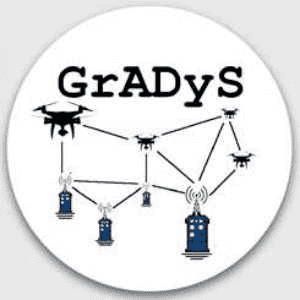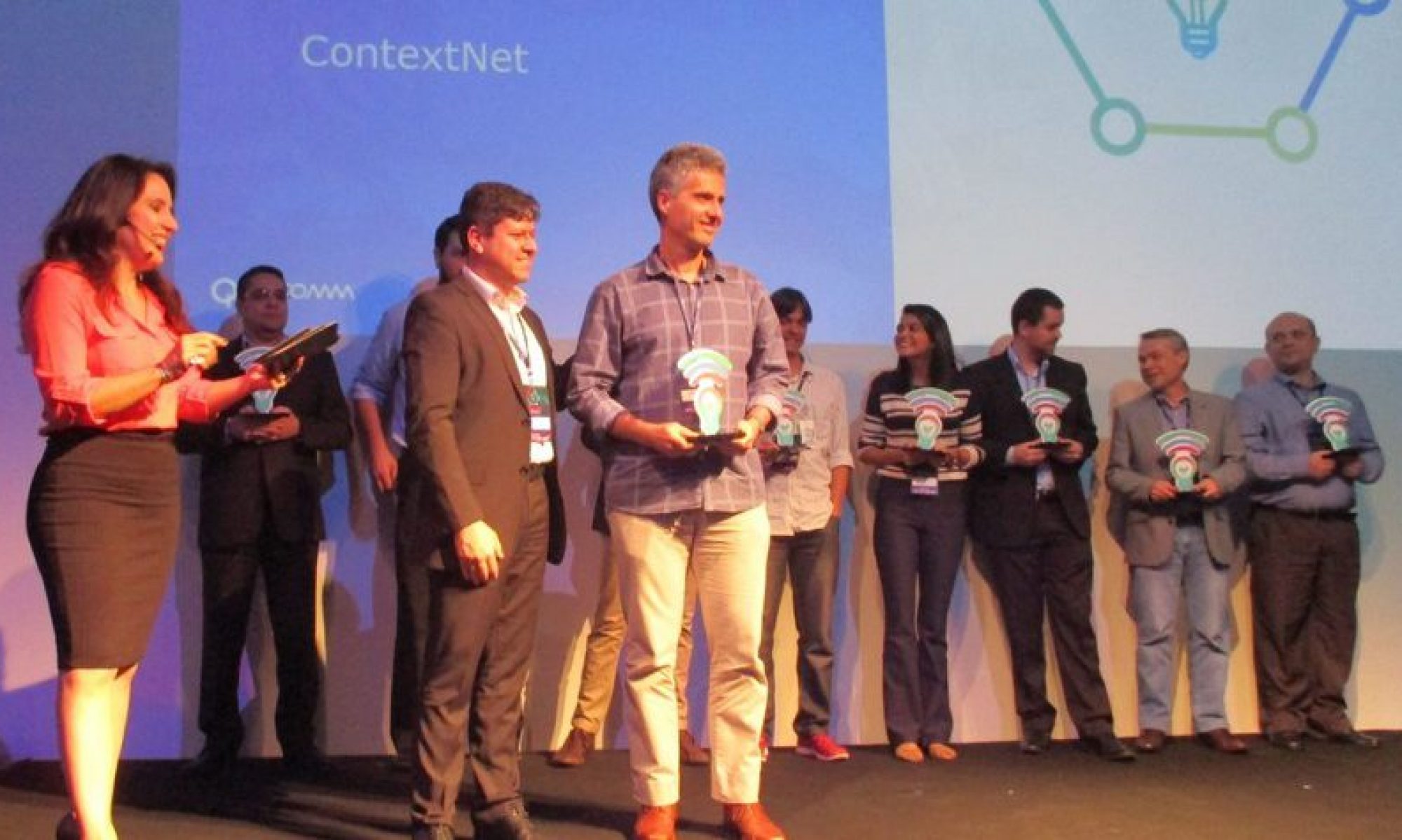

Ground-and-Air Dynamic sensors networkS a.k.a. GrADyS
There exist several situations where a geographic region of some size needs to be scanned or monitored through many sensors, but where it is either absolutely impossible or prohibitively expensive to deploy and maintain wireless communication infrastructure for the distributed sensors. Either because the region is hidden behind walls, not easily accessible, hard to get through, or because it is infected with some lethal bacteria or virus transmitter.
In this case, the best is to scatter (disposable) sensors in the region and let they transmit the collected sensor data by wireless means to a overflying UAV/drone, which then physically hauls the collected data from the monitored region to a central base station that functions as a gateway to the Internet.
In this solution, the bottleneck is the number of UAVs, since a single UAV may miss sensor data from the sensors spread in the region while it is carrying data back and forth.
Therefore, in situations where one needs a continuous environmental monitoring of a region with the smallest possible loss of data, it is mandatory to use a fleet of roaming UAVs that coordinate their fight trajectories and their data swap operations so as to minimize the intervals of time where sensors on the ground are left unattended.
This is the contribution of the flying network (of UAVs), but the WSAN on the ground can also optimize its data routing in order to reach faster any of the overflying UAVs. Hence, based on the WSAN node’s energy reserves and the current (or “soon-to-be”) position of any moving data sink (the UAV data collector) the sensor network’s routing protocol can try to minimize global energy expenditure and the fastest possible flush of the collected data. With the goal of investigating the above mentioned problems, conceiving protocols and middleware services, as well as testing them through simulations and in real-world experiments.
Sample flight
Publications
-
ISCC 2025 – Addressing Challenges in FANETs – Applied UAV Experiments with Cost-Effective Hardware – link to appear – DOI: to appear – PDF PPT
-
FUSION 2025 – Collaborative Multi-UAV Data Fusion for SAR Applications with Moving Targets – link to appear – DOI: to appear – PDF PPT
-
FUSION 2025 – Decentralized Sensor Fusion through UAV-Mediated Federated Learning for Resource-Constrained IoT Networks – link to appear – DOI: to appear – PDF PPT
-
FUSION 2025 – From Air to Ground: Coordinating UAVs and UGVs in SAR missions – link to appear – DOI: to appear – PDF PPT
-
LADC 2024 – Practical Challenges and Pitfalls of Bluetooth Mesh Data Collection Experiments with ESP-32 Microcontrollers – link – DOI: https://doi.org/10.1145/3697090.369711
-
ISCC 2024 – Ventures, Insights, and Ponderings from Real-World Experiments with FANETs and UAVs – link – DOI: 10.1109/ISCC61673.2024.10733659 – pdf
SBRC 2024 – Pasture-based Livestock Identification and Counting by Coordenated UAVs – link – PDF
SBRC 2024 – Dynamic effects of communication delay, failure rates, and speed on UAV swarm formation – link – PDF
SBRC 2024 – Developing Algorithms for the Internet of Flying Things Through Environments With Varying Degrees of Realism – link – PDF
-
ISCC 2023 – Collecting Sensor Data from WSNs on the Ground by UAVs: Assessing Mismatches from Real-World Experiments and Their Corresponding Simulations – link – DOI: 10.1109/ISCC58397.2023.10218042 – pdf – video
-
Arxiv – Practical Challenges And Pitfalls Of Bluetooth Mesh Data Collection Experiments With Esp-32 Microcontrollers (Exteded version versus LADC 2024 short version) – link
-
Arxiv – Wireless Connectivity of a Ground-and-Air Sensor Network – pdf
-
MAVNETSIM – A tool to bind OMNET/INET++ with ArduPilot – pdf – Source code – Online documentation – video
-
Ad Hoc Journal – Exploring data collection on Bluetooth Mesh networks – link – DOI: 10.1016/j.adhoc.2022.102809 – pdf
-
SBRC 2022 – GrADyS-SIM – A OMNET++/INET simulation framework for Internet of Flying things – link – Source code and online documentation – pdf – video
-
GrADyS-GS – A ground station for managing field experiments with Autonomous Vehicles and Wireless Sensor Networks – pdf – Source code and online documentation – video
-
WINSYS 2021 – Opportunistic routing towards mobile sink nodes in Bluetooth Mesh networks – ppt – video – DOI: 10.5220/0010557000670075 – pdf
-
Project Overview
https://arxiv.org/abs/2012.10690 – brief video -
Informal blog
https://gradys.tumblr.com/
Team
Dr. rer nat habil Markus Endler as PI
D.Sc. Bruno Olivieri as Project manager
M.Sc. Marcelo Paulon as PhD student
M.Sc. Milena Cavalcanti as PhD student
M.Sc. Laércio Lucchesi as PhD student
Francisco Fleury as undergraduate student
Alumini
M.Sc. Thiago Lamenza as M.Sc. student
M.Sc. Josef Kamysek as intern
D.Sc. Vitor Andrezo as Posdoc
Breno Perricone as undergraduate student
Johan Marcos as undergraduate student

